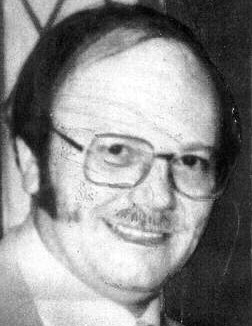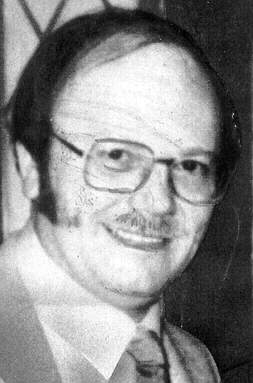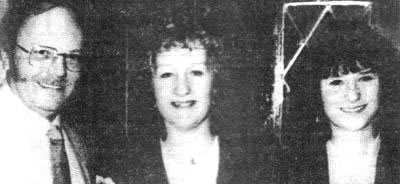A HAZEL Grove man who faked his
own suicide after murdering his wife and 13-year-old stepdaughter could
be freed on parole later this year, a High Court judge has ruled.
Robert William Healey, now 57,
was jailed for life at Liverpool Crown Court in March 1987, after being
convicted of murdering his wife, Greeba, and step-daughter, Marie.
Healey, from Longmead Avenue,
struck 40-year-old Marie at least 15 times over the head with a rolling
pin and strangled his teenage stepdaughter after having sex with both of
them shortly before their deaths.
Mr Justice Gibbs - who ruled on
the minimum term Healey must serve - said it can be inferred his motives
for the killings arose out of 'his sexual activities within the home'.
"He took elaborate steps to
cover his tracks, burying the victims, leaving a false trail suggesting
they had left, and faking suicide," the judge said.
Healey had then left his clothes
on a Prestatyn beach before eventually giving himself up.
Sitting at London's Royal Courts
of Justice the judge ruled that Healey must serve 20 years behind bars
before he can be considered for release on parole.
However from that, the time he
spent in custody on remand - seven months and 12 days - must be deducted
meaning that he can be considered for release in September this year, 19
years and 138 days after he was sentenced.
Mr Justice Gibbs said had Healey
been sentenced today under current rules, it was arguable that he would
deserve a 'whole life' tariff, given the seriousness of his crimes.
However, the sentencing rules in
place in 1987 had to be applied to the case, the judge added.
Healey admitted subsequently
that he was guilty of murder, acknowledging the defence argument he
advanced at his trial - provocation and lack of intent - were false.
"There is evidence of good
progress towards rehabilitation in prison," the judge said.
Even once Healey has served his
20-year tariff, he will only be freed if he can persuade the Parole
Board he poses no public threat.
Approved Judgment
I direct that pursuant to CPR PD 39A para 6.1 no
official shorthand note shall be taken of this Judgment and that copies
of this version as handed down may be treated as authentic.
THE HON MR JUSTICE GIBBS
1. On 30th March 1987 the applicant Robert William
Healey was convicted of murdering his wife and his stepdaughter then
aged 18. The trial Judge, Mr Justice McNeill, recommended a minimum term
of at least fifteen years as necessary to meet the requirements of
retribution and general deterrence. Lord Lane, then Chief Justice, said
by way of recommendation to the Home Secretary: “I agree that 15 years
is a proper minimum period apart from the risk factor.” His
recommendation was dated 16th March 1988.
2. On 21st April 1997 a minimum term of 20 years was
notified by the Home Secretary. Pursuant to the provisions of Schedule
22(3) of the Criminal Justice Act 2003, the applicant has applied to the
High Court for the tariff set by the Home Secretary to be reviewed. In
reviewing the term, I have had regard to the report of the trial judge,
the representations made on behalf of the applicant in 1995, and
representations in support of this application dated 4th March 2005.
3. Pursuant to section 269 of the Act and to Schedule
22 (3) and (4), in considering the seriousness of the offences, I have
had regard to the general principles set out in Schedule 21 and the
recommendations made both by the trial judge and the Lord Chief Justice.
I have also had regard to the length of the notified minimum term and to
the provisions of section 67 of the Criminal Justice Act 1967 relating
to the time spent in custody on remand.
4. The facts of the case in summary are as follows.
The applicant killed his wife by striking her at least fifteen times
over the head with a rolling pin, the fatal blow being a crush fracture
of the left parietal region of the skull. He killed his thirteen year
old stepdaughter by asphyxiation caused by sustained pressure to the
throat. The applicant accepted that he had killed them but advanced a
defence based on provocation and /or lack of intent, which the jury
rejected. The applicant had had sexual intercourse with both victims
shortly before their death. It can be inferred that his motives for the
killings arose out of his sexual activities within the home. He took
elaborate steps to cover his tracks, burying the victims, leaving a
false trail suggesting they had left, and faking suicide. Eventually
however he gave himself up. He has admitted subsequently that he is
guilty of murder and has acknowledged that the defences advanced were
false. There is evidence of good progress towards rehabilitation in
prison.
5. Applying schedule 21 of the 2003 Act, it is
arguable that the seriousness of the offences was “exceptionally high”,
so as to justify a “whole life order” under paragraph 4(1). This is
because one of the murders was of a child, and the motivation could
reasonably be described as sexual: see paragraph 4(2)(b). A further
arguable reason is that the murder was of two people, and in both cases
sexual conduct can be said to have been involved. If the conditions
under paragraph 4(1) are not satisfied, then the case would fall within
paragraph 5(1) since at least one of the murders involved sexual conduct:
see paragraph 5(2)(e). This would call for a thirty year starting point.
6. There were also other aggravating features: one of
the victims was vulnerable by reason of her age; the applicant was in a
position of trust in relation to her; and he buried the bodies of the
victims afterwards in order to conceal his crimes. There were no
significant mitigating factors.
7. It would however be wrong in principle to apply
today’s standards as reflected by the provisions of the 2003 Act. In any
event, pursuant to Schedule 22 (3) (1) (a) of the 2003 Act, the High
Court cannot increase the minimum term notified by the Home Secretary.
It is in my judgment necessary to examine the appropriate minimum term
in the light of the principles applicable at the time of the sentence
and recommendations. In doing so, I pay full regard to the observations
and recommendations of the experienced trial judge, and the
recommendation of a distinguished Lord Chief Justice.
8. In connection with the Home Secretary’s practice
prevailing at the time of the offences and the original sentence, I have
regard to the guidance sent to judges by Lord Bingham, then Lord Chief
Justice, on 10th February 1997. This guidance provided a starting point
in an “unexceptional” or “normal” murder of 14 years. It provided
examples of mitigating and aggravating circumstances which would affect
the starting point. None of the mitigating circumstances apply to the
present case; but there a number of seriously aggravating features.
These include the fact that two people were killed; that there had been
sexual maltreatment of one of the victims; and the concealment of the
bodies. I am driven to the conclusion on the facts of the present case
that the Home Secretary was entitled to notify a term greater than that
recommended, and that he was right to do so. In coming to that
conclusion, I deprecate the inordinate delay in notifying the term.
Nevertheless, in my judgment, by the standards then prevailing, the
recommendation of fifteen years did not make adequate allowance for the
fact that this was a double murder. Nor did it take into consideration
sufficiently or at all the other serious aggravating factors.
9. For these reasons, I consider that the appropriate
minimum term is 20 years. It seems to me that the progress of the
applicant in prison, whilst commendable, is not of sufficient weight on
the facts of the present case to justify a reduction in the term.
However, under section 67 of the 1967 Act there falls to be deducted the
time the applicant spent in custody on remand, namely 7 months and 12
days. In the result, the time set will be 19 years and 138 days.



